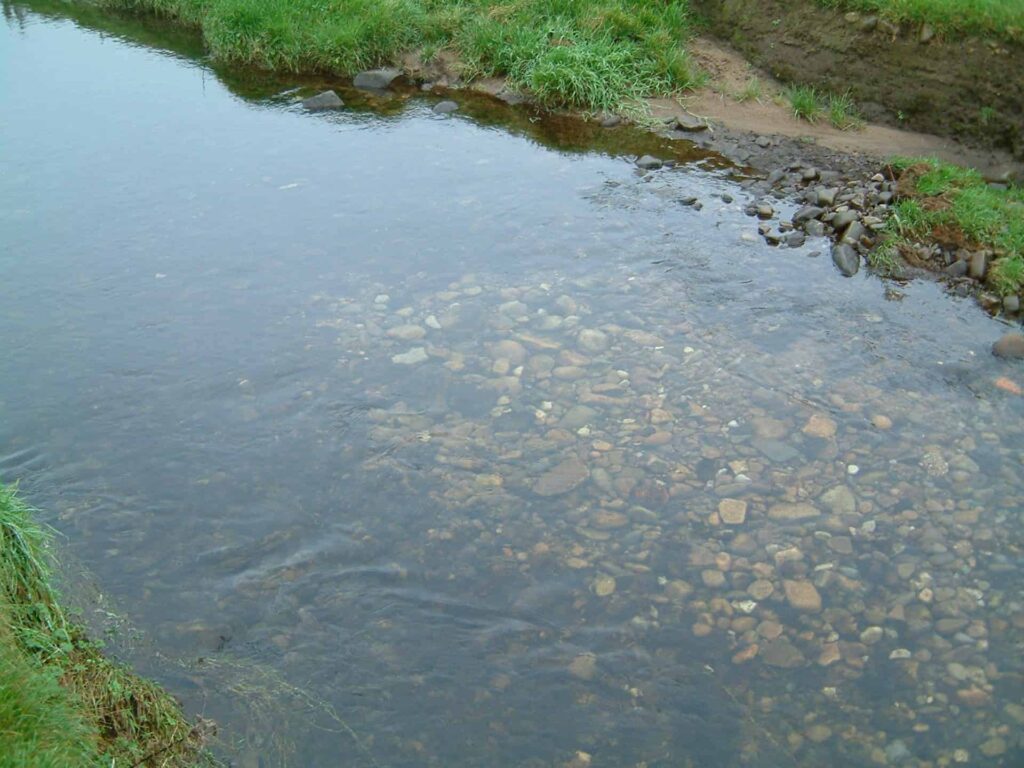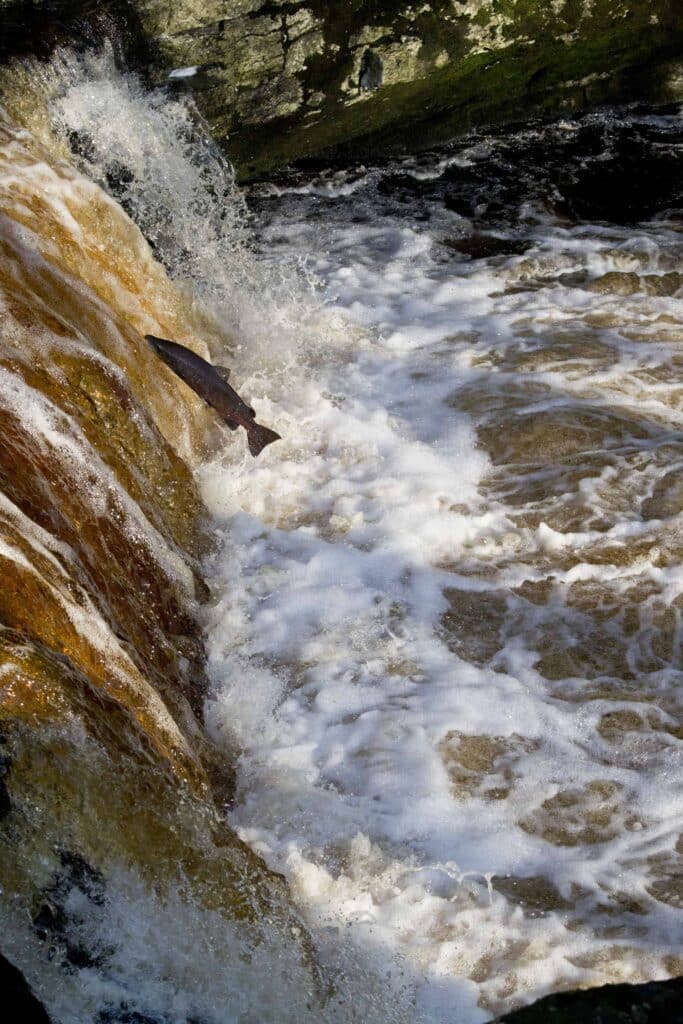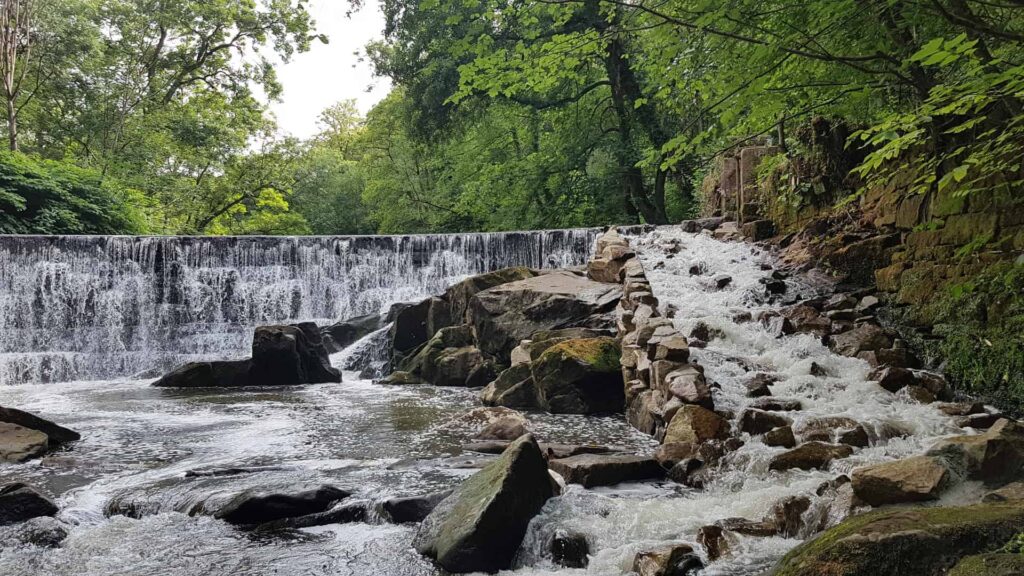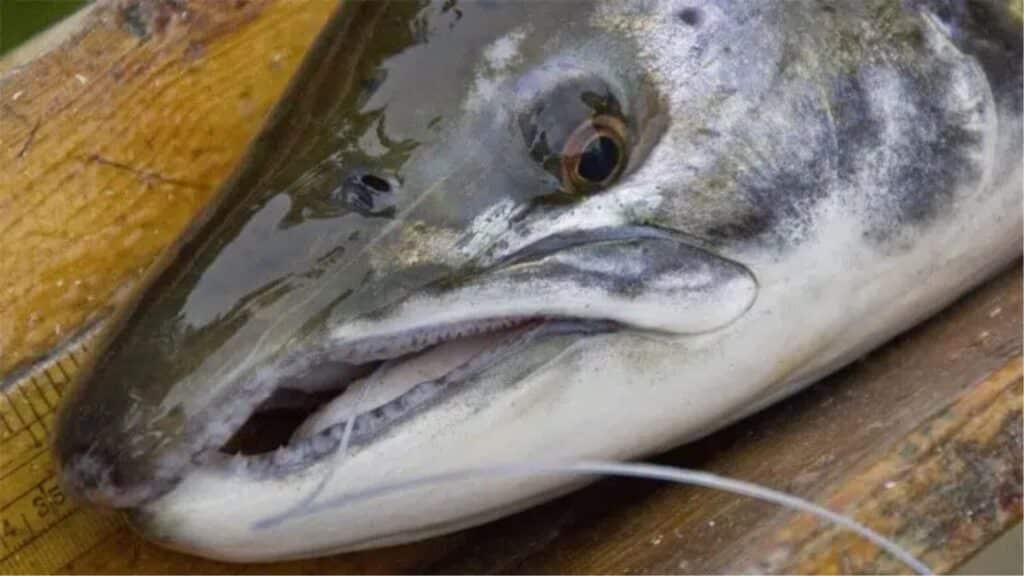Salmon are one of the most well known creatures in our rivers, and every year they provide one of natures greatest spectacles; the salmon run.
This amazing annual migration takes the Atlantic salmon from the ocean to the rivers they were born in. It starts with a gathering in the sea. Here in the ocean the salmon, who were born in our rivers, have spent between up to four years maturing, growing, and gaining strength. When autumn arrives and instinct kicks in, the salmon wait at the river mouth for the autumn rains. Whilst it might seem like an odd start to a journey, the rain brings raised river levels which provide vital help at the start their journey.

Over the coming weeks the salmon will risk their lives in their mission to reproduce (or spawn) whilst they take part in a literal uphill battle on their way home. Some salmon swim thousands of miles to reproduce.
In fact, once they enter the river, the salmon stop eating. At this point their sole focus is to return to the place they were born and produce young of their own.
Once they reach their destination, the successful salmon reproduce by creating dips in the bottom of the river known as ‘redds’ by flapping their tails. Females lay eggs in these redds, the male fertilises them, and the female covers the eggs back up. With their mission complete the salmon leave their eggs in peace and make the journey downstream to the sea.
In time, the whole process will start again with generation after generation following the same path.
Success and perils on the salmon run
It might seem that the odds are stacked against these river warriors, and this is true. Sadly, it is estimated that only around 10% of salmon survive this journey. Not only do they make this journey on an empty stomach, losing weight, muscle and energy; they also face the risk of being eaten, attacks from other fish, and some man-made issues. However the fittest, strongest, and luckiest salmon will make their way back to the same spawning ground every year.
Whilst predation is a natural part of life, some of the issues salmon face aren’t so natural. One of the more troubling problems are river blocking dams and weirs. Structures like this are very hard to get over, meaning the fish waste valuable energy trying to jump. Some weirs are so big that the fish simply cannot complete their journey, succumbing to exhaustion or their injuries.
Making rivers more salmon friendly is a huge part of our work. There isn’t a single resolution which will help, it takes time, teamwork, and many smaller changes to improve rivers. But we’re proud that one step at a time we’re making rivers a better place for salmon and other wildlife. As our rivers improve, we hope that in the future a greater percentage of salmon will successfully spawn.

If you want to try and spot a salmon yourself the run usually starts from mid-October and carries on throughout November and December, ideally following a period of rain after a dry spell. As always make sure to be careful around water!



